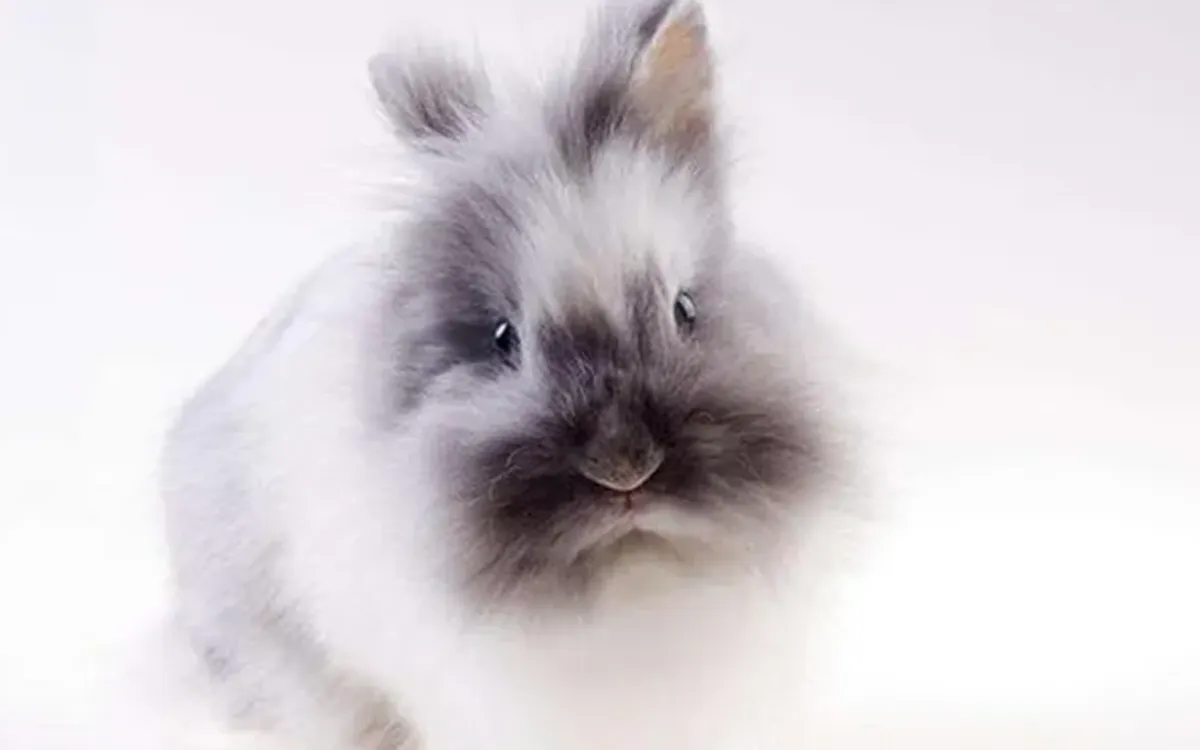Table of Contents
The Angora rabbit is a renowned long-haired rabbit breed.
In Angora rabbits, the period from birth to 30 days old (pre-weaning) is referred to as the newborn stage, while the phase from weaning to 90 days old is classified as the juvenile stage.
During the juvenile phase, Angora rabbits exhibit the following characteristics:
- Immature digestive system: Their gastrointestinal systems remain underdeveloped.
- Rapid growth: High nutritional demands due to fast growth rates, substantial food intake, and increased water consumption.
- Vulnerability: Underdeveloped digestive organs and weakened immunity make them prone to digestive disorders.
This stage represents the period of highest morbidity and mortality rates throughout the lifespan of Angora rabbits. Meticulous management practices are therefore essential during the juvenile phase to ensure healthy development.
What defines juvenile Angora rabbit physiology?
Underdeveloped Digestive System
As herbivores, Angora rabbits possess anatomical and physiological adaptations in their digestive systems to suit their dietary needs. Key features include:
Dental Structure:
- Incisors: Positioned centrally in the upper and lower jaws, ideal for cutting fibrous plant material.
- Molars: Located on the sides of the jaws, with broad grinding surfaces to crush and process plant matter.
Cecum Function:
Adult Angora rabbits have a highly developed cecum, which acts as a natural fermentation chamber. It houses a stable microbial ecosystem (primarily bacteria and protozoa) that breaks down plant fibers into absorbable nitrogen compounds. This microbial community is maintained and regulated through coprophagy (consumption of nutrient-rich cecal pellets).
Juvenile Limitations:
In young Angora rabbits, the cecal microbial flora is still developing and only reaches 80-90% of the complexity seen in adults. The cecum does not fully mature or function effectively until around 60 days of age, leaving juvenile rabbits more vulnerable to digestive imbalances and reduced nutrient absorption during this period.
High Metabolic Rate, Rapid Growth, and Elevated Nutritional Demands
Juvenile Angora rabbits exhibit intense metabolic activity and rapid growth. By 30 days of age (weaning), their body weight reaches approximately 0.7 kg, which is 8–9 times their birth weight. By 90 days of age, their weight typically ranges between 2.2–2.5 kg. To sustain this growth, juvenile rabbits require:
- Substantial food intake: Daily feed consumption increases from 70 gat weaning to ≥200 g by 90 days of age.
- High-quality diet: Elevated demands for nutrient-dense feed to meet energy and growth requirements.
Weak Immunity and Susceptibility to Digestive Disorders
Post-weaning juvenile Angora rabbits face significant challenges due to their underdeveloped digestive systems:
Limited digestive enzyme production:
- Pre-weaning kits rely on high lactase activity to digest milk but lack sufficient maltase, sucrase, proteases, and amylases to efficiently break down proteins and starches.
- Post-weaning, reduced lactose intake lowers gastric acidity and lactic acid production, impairing protein digestion.
Microbial imbalance:
Dietary proteins and inorganic cations in feed can bind to stomach acid, further reducing digestive efficiency. This creates an environment conducive to pathogenic microbial overgrowth, disrupting the gut microbiome and increasing risks of enteritis and other gastrointestinal diseases.
Poor thermoregulation:
Juvenile Angora rabbits are highly sensitive to temperature fluctuations, making them vulnerable to cold/heat stress, which exacerbates digestive vulnerabilities.
Key Takeaway:
The juvenile phase demands meticulous attention to diet quality, gradual feed transitions, and environmental stability to mitigate digestive disorders and support healthy development in Angora rabbits.
How to care for juvenile Angora rabbits?
Minimize Post-Weaning Stress
After weaning, Angora rabbit kits face significant challenges due to environmental changes and the absence of maternal care. Key strategies include:
- Consistent diet: Maintain the same feed used during the pre-weaning period to avoid abrupt dietary changes.
- Probiotic supplementation: Add probiotics to drinking water to alleviate stress and support gut health.
- Social housing: Avoid isolating kits in individual cages; group housing reduces loneliness and promotes behavioral stability.
Optimize Diet Composition and Quality
A high-fiber, nutrient-dense diet is critical to prevent enteritis and support growth. Recommended dietary guidelines:
Reduce high-energy grains(e.g., corn) and increase fiber-rich ingredients like alfalfa meal, which provides highly digestible protein (75–80% digestibility).
Sample diet formula:
- Alfalfa meal: 54%
- Wheat flour: 20%
- Soybean meal: 21%
- Molasses (byproduct): 3%
- Vegetable oil: 1.25%
- Calcium phosphate: 0.25%
- Salt: 0.5%
Strictly avoid moldy, fermented, or spoiled feed.
Incorporate Milk or Milk Powder
To accelerate the establishment of a functional gut microbiome and improve digestion post-weaning:
- Add cow’s milk or milk powderto the diet. This practice enhances microbial diversity in the digestive tract and significantly boosts survival rates.
- Gradually phase out milk as the gut matures (around 60 days of age).
Key Considerations:
- Monitor feed intake and fecal consistency daily to detect early signs of digestive issues.
- Ensure clean, fresh water is always available to support hydration and nutrient absorption.
- Maintain a stable, draft-free environment to mitigate temperature-related stress.
Scheduled, Portion-Controlled Feeding with Small, Frequent Meals
Post-weaning juvenile Angora rabbits have large appetites and tend to overeat. To prevent digestive issues (e.g., indigestion, diarrhea):
- Limit high-moisture greens(e.g., leafy vegetables) to avoid overconsumption.
- Fixed feeding times: Establish a consistent daily feeding schedule.
- Monitor leftovers: Adjust portion sizes based on leftover feed in troughs to ensure adequate intake without waste.
- Observe fecal consistency: Soft or irregular droppings indicate digestive imbalance, requiring immediate dietary adjustments.
Mitigate Weather-Related Stress
Juvenile Angora rabbits are highly sensitive to temperature fluctuations:
Seasonal transitions(e.g., late autumn to early winter, late winter to early spring):
- Provide insulation or heating during cold snaps to prevent respiratory infections (e.g., pneumonia).
- Ensure proper ventilation and cooling during heatwaves to avoid heat stress.
Stable environment: Maintain a draft-free, temperature-controlled habitat.
Disease Prevention and Hygiene Management
Juvenile Angora rabbits are prone to infectious diseases. Key preventive measures include:
Daily sanitation: Clean cages twice daily (morning and evening) to remove feces and reduce pathogen buildup.
Regular disinfection: Thoroughly disinfect cages, feeding tools, and nesting boxes with effective sanitizers.
Coccidiosis control:
- Add antiprotozoal medication to feed during humid summer months.
- Incorporate chopped onions or garlic into the diet for natural antimicrobial benefits and growth promotion.
Quarantine new arrivals: Isolate newly introduced rabbits to prevent disease transmission.
Pro Tip:
Consistent observation and proactive management during the juvenile stage are critical to reducing mortality rates and ensuring healthy development in Angora rabbits.









Add comment